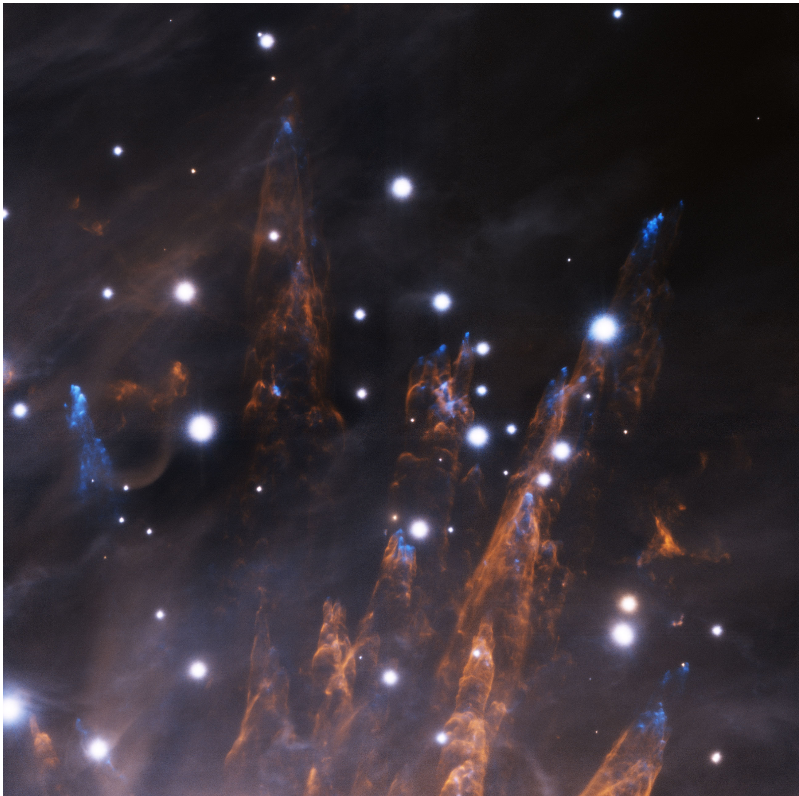 The Orion Bullets
The Orion BulletsExplanation: Cosmic bullets pierce the outskirts of the Orion Nebula some 1500 light-years distant in this sharp infrared close-up. Blasted out by energetic massive star formation the bullets, relatively dense, hot gas clouds about ten times the size of Pluto's orbit, are blue in the false color image. Glowing with the light of ionized iron atoms they travel at speeds of hundreds of kilometers per second, their passage traced by yellowish trails of the nebula's shock-heated hydrogen gas. The cone-shaped wakes are up to a fifth of a light-year long. The detailed image was created using the 8.1 meter Gemini South telescope in Chile with a newly commisioned adaptive optics system (GeMS). Achieving a larger field of view than previous generation adaptive optics, GeMS uses five laser generated guide stars to help compensate for the blurring effects of planet Earth's atmosphere.
| << Previous APOD | This Day in APOD | Next APOD >> |

